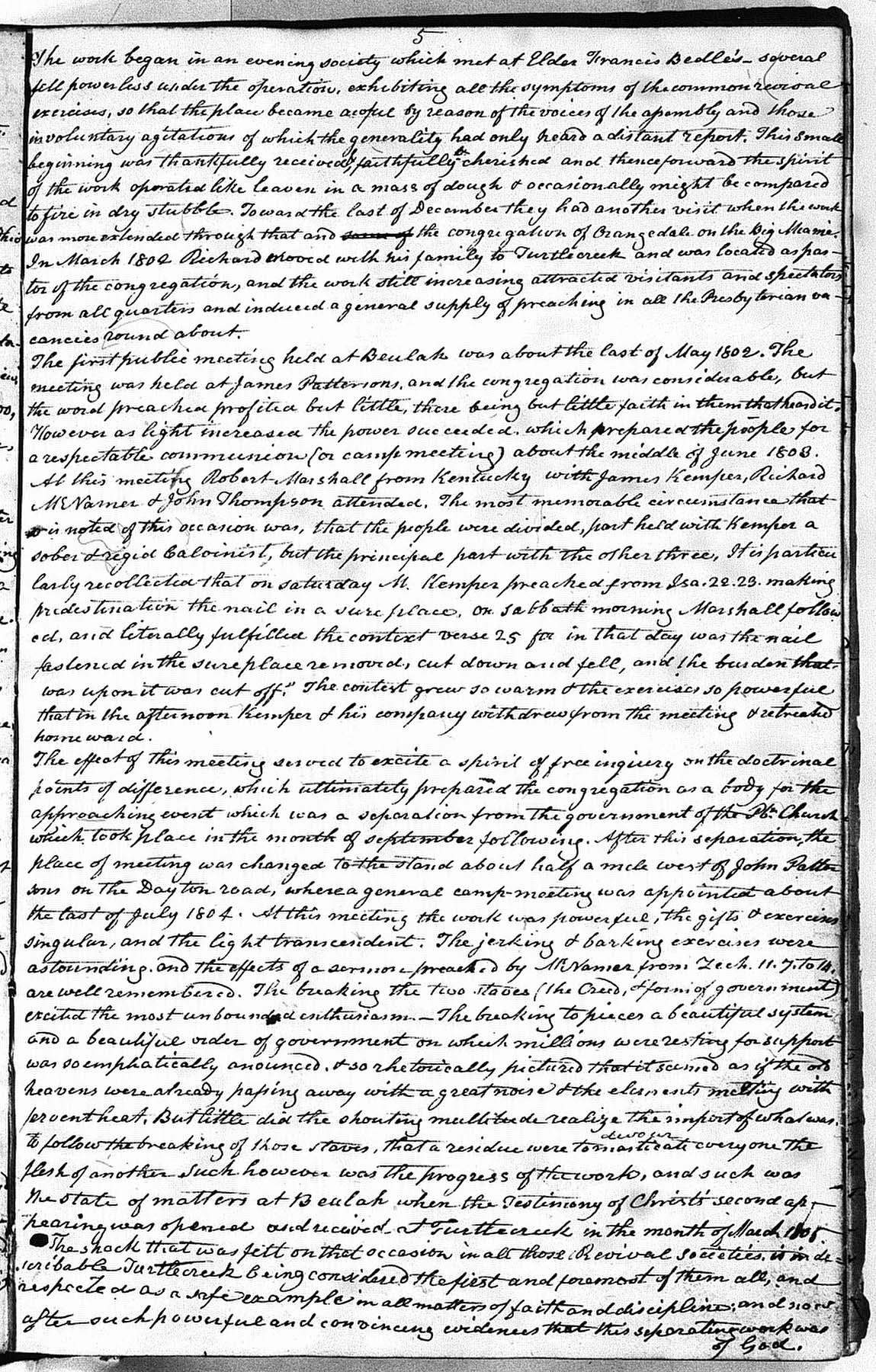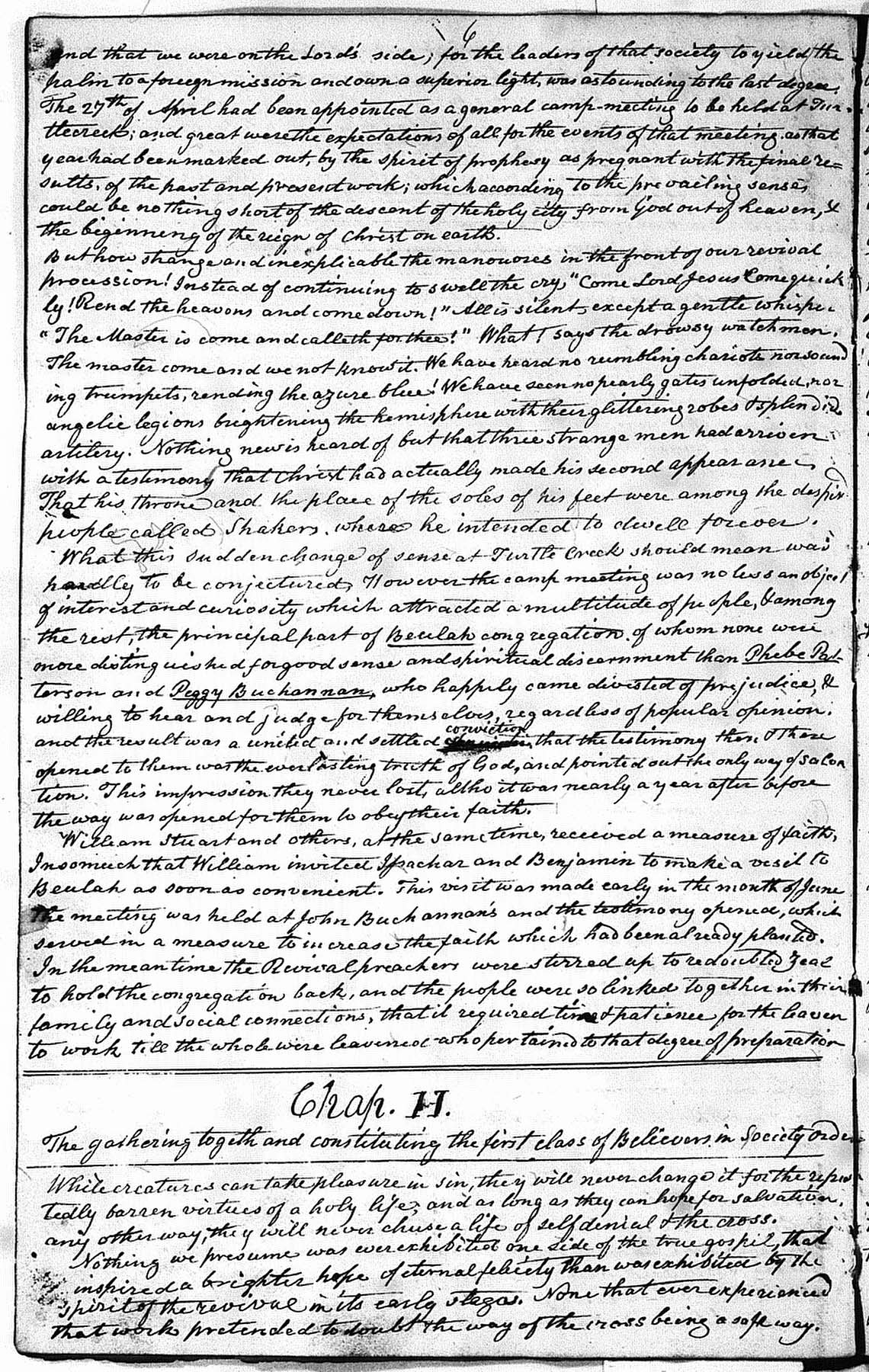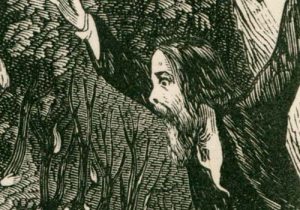During the 1830s, Shaker apologist Richard McNemar penned a manuscript history of the Believers’ small village at Watervliet (originally Beaver Creek), Ohio, near Dayton. In this chapter, the former New Light minister assesses the tenor of religion in southern Ohio during the years leading up to the arrival of the first Shaker missionaries in 1805.
The first settlement of this country, and the commencement of religious society.
Near the close of the last century, when the dire disasters of war & blood had ceased, and peace with the natives was established, and the territory northwest of the river Ohio had opened her fertile forests for the reception of emigrants from the several states, settlements in swift progression were formed on every direction, till the rich prairas on Mad river & the tributary streams of the two Miamis on either side invited the early attention of a respectable number sufficient to brighten the prospect of social happiness, both in a civil & religious view. This Beaver-Creek settlement where the church is now located was commenced in the year 1800, by emigrants from Kentucky, mostly Bethel congregation on the waters of North Elkhorn between Georgetown and Lexington.
John Patterson moved with his family to Ohio in the fall of the year 1799, spent the winter on the great Praira where he had raised a crop the summer before, and the following spring moved his family to the place now consecrated to the use of the gospel. John Huston a singleman entered a quarter section and began to improve it about the same time. In the spring of 1801, John Buchannan arrived with his family; James Milligan, William Stuart and their connections came in the year 1803. All these being respectable members of the Presbyterian Church, and being joined by others of the same profession, formed a congregation called Beulah, which was taken under the care of Presbytery and supplied with occasional preaching, in common with other vacancies.
The extraordinary revival of religion, which broke out in the Presbyterian church Kentucky, in the spring of 1801, and which took a general spread through the Western country, could not fail to interest the feelings of this branch of the Church. The great excitement produced in the public mind by the strange phenomena of this astonishing work, attracted visitants from every quarter to see the exhibitions of the camp-meeting, which in those days, baffled & confounded all human phylosophy, and forced a general assent from unprejudiced candor, that it was the effect of nothing short of a supernatural and divine agency.
Turtlecreek one of the oldest congregations in the state, was roused by the report [and] dispatched two of their members viz. David Spining and John Morris to Kentucky to see & examine the work. They attended a camp meeting in the fall of 1801, at Blue Spring in Fayette county, where the work was very powerfull, and both became subjects of the operations, and returned home with a testimony that God was in it of a truth. This excited a spirit of prayer among the people, that they might be partakers of the work; nor was it long till their prayers were answered. Sometime in November, Richard McNamer gave them a call on his return from a meeting of Presbytery at Cincinnati, held several meetings, and no small stir took place on the occasion. The work began in an evening society which met at Elder Francis Bedle’s. Several fell powerless under the operation, exhibiting all the symptoms of the common revival exercises, so that the place became awful by reason of the voices of the assembly and those involuntary agitations of which the generality had only heard a distant report. This small beginning was thankfully received, & faithfully cherished and thenceforward the spirit of the work operated like leaven in a mass of dough & occasionally might be compared to fire in dry stubble. Toward the last of December they had another visit when the work was more extended through that and the congregation at Orangedale on the Big Miami. In March 1802 Richard moved with his family to Turtlecreek and was located as pastor of the congregation, and the work still increasing attracted visitants and spectators from all quarters and induced a general supply of preaching in all the Presbyterian vacancies round about.
The first public meeting held at Beulah was about the last of May 1802. The meeting was held at James Pattersons, and the congregation was considerable, but the word preached profited but little, there being but little faith in them that heard it. However as light increased the power succeeded, which prepared the people for a respectable communion (or camp meeting) about the middle of June 1803. At this meeting Robert Marshall from Kentucky with James Kemper, Richard McNamer & John Thompson attended. The most memorable circumstance that is noted of this occasion was, that the people were divided, part held with Kemper a sober & rigid Calvinist, but the principal part with the other three. It is particularly recollected that on Saturday Mr. Kemper preached from Isaiah 22:23, making predestination the nail in a sure place. On Sabbath morning Marshall followed, and literally fulfilled the context verse 25 “for in that day was the nail fastened in the sure place removed, cut down and fell, and the burden that was upon it was cut off.” The contest grew so warm & the exercises so powerful that in the afternoon Kemper & his company withdrew from the meeting & retreated homeward.
Source
Richard McNemar, “A General Review of the most important events relating to the Rise and progress of The United Society of Believers At Watervliet in the county of Montgomery And State of Ohio,” 1832, 4-6, no. 263, microfilm, reel 19, Shaker Collection of Records Concerning the United Society of Believers in Christ’s Second Appearing, 1676–1937, MSS39552, Library of Congress.



